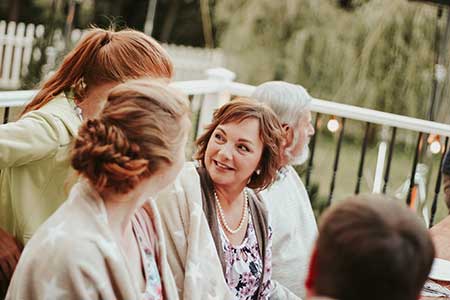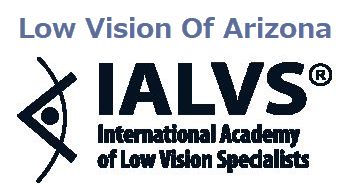
Charles Bonnet Syndrome
Charles Bonnet Syndrome (CBS), also known as “visual hallucinations”, is a common condition among those with vision impairment due to eye diseases such as macular degeneration, or side vision loss resulting from a stroke. Fortunately, Charles Bonnet Syndrome-related imaging is unrelated to psychiatric hallucinations. It is strictly caused by vision impairment.
These images occur when a person is fully conscious and wide awake, often during broad daylight. The person is aware that the hallucinations are not real. The images come and go for no reason, they are exclusively visual and are never combined with sounds or sensations.
If you begin to notice any type of hallucination, it’s important to make an appointment with Dr. Paul Woolf as soon as possible.
What Causes CBS?
Charles Bonnet Syndrome is caused by the way the brain reacts to vision loss. It begins in the weeks and months following a dramatic deterioration of sight.
Those with good vision can clearly see things in their environment. However, in those with vision impairment, the brain doesn’t receive as much information from the eyes as it used to, leading the brain to fill these gaps by creating new illusionary images.
This condition is often compared to “phantom limb” experiences felt by people who have had a limb amputated. They may still feel their missing toes or fingers or may experience itching on an arm that is no longer there. This occurs when the nerves in the body are still active and send signals to the brain, leading the brain to interpret the signals as sensations coming from the missing limb. Similarly, when vision becomes severely impaired, the visual system begins firing off visual images.
This condition affects up to about 40% percent of people with low vision. Research suggests that it is more likely to occur in those with visual acuity between 20/120 and 20/400.
What Kinds of Images Does One With CBS See?
 Typical images people see include cartoon characters, flowers, faces, hands rubbing each other, waterfalls, mountains, animals, maple trees in vibrant autumn foliage, colored polka dots, rowhouses, brightly colored balloons, repeated visual patterns and other amusing or annoying images.
Typical images people see include cartoon characters, flowers, faces, hands rubbing each other, waterfalls, mountains, animals, maple trees in vibrant autumn foliage, colored polka dots, rowhouses, brightly colored balloons, repeated visual patterns and other amusing or annoying images.
CBS hallucinations only affect your sight. In other words, you cannot hear, smell or feel things that aren’t actually there. Those with the condition can recognize when what they’re seeing isn’t real, even though it’s vivid. In fact, once one understands that his or her illusions are not symptoms of mental illness, one can feel more at ease with the random appearance and disappearance of images.
Can Charles Bonnet Syndrome Be Treated?
Currently, there is no cure for CBS, but just knowing that the condition is not a mental health problem can bring relief. Furthermore, it also helps to remember that CBS generally improves with time (even though it doesn’t disappear completely). Make sure to share your experiences with a support system, such as friends and family, as that too can help.
How Can I Cope With CBS?
There are several things you can try to do to cope with this condition.
- When you have a hallucination, often you can make it disappear by turning on the TV or radio, standing up and moving around, or walking into a different room.
- You can also cause it to fade away by looking directly at the image or reaching out to touch it.
- At times, moving your eyes or blinking rapidly can also help.
- Another trick to try is to move your eyes from left to right every second for 20-30 seconds. If the hallucinations persist, try again.
- Lighting conditions may also impact the frequency at which the hallucinations appear. If your hallucinations occur in dimly lit environments, then opening the curtains, turning on a light or the television may help. If your hallucinations happen in a well-lit area, then switching off the light may be a good idea.
- Certain people experience exacerbated hallucinations when tired or stressed. So make sure that you get enough sleep at night and make time to relax in order to stay calm and prevent hallucinations. Relaxation techniques such as yoga, mild exercise or other stress-reduction therapies can help.
- Tinted eyeglasses may reduce the illusions.
- Improving eyesight with custom-designed low vision glasses may reduce the occurrence of these images.
How Long Does CBS Last?
 If you have Charles Bonnet Syndrome, it’s impossible to predict how frequently you will see the images or how long they will last. You may have these hallucinations for only a few months or you may have it for years. You may see visual images every day, a few times a week or several times a month.
If you have Charles Bonnet Syndrome, it’s impossible to predict how frequently you will see the images or how long they will last. You may have these hallucinations for only a few months or you may have it for years. You may see visual images every day, a few times a week or several times a month.
How is CBS Diagnosed?
There is no specific test used to diagnose this condition. However, Dr. Paul Woolf will discuss your medical history with you and will try to rule out other sources of visual hallucinations, such as:
- mental health conditions (i.e. schizophrenia or psychosis)
- neurological conditions (i.e. dementia or Parkinson’s)
If you have vision loss and experience hallucinations and don’t have these conditions present, you likely have CBS.
How We Can Help
If you have CBS, that means you have low vision. But let us reassure you that you can regain functional vision and do the things you love to do. In fact, there are many things you can do to make the most of your remaining vision; our custom vision aids and devices will allow you to maximize the use of your remaining vision in the most effective way possible.
Begin the journey to better vision solutions and a better quality of life with Dr. Paul Woolf . All of us at Low Vision of Arizona are dedicated to helping you remain independent and improve the quality of your life.
Low Vision of Arizona is the preferred provider of low vision aids for patients from Gilbert, Mesa, Phoenix and Chandler in Arizona.
